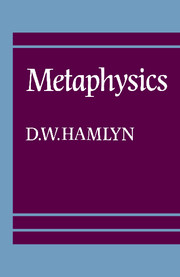2 - Appearance and reality
Published online by Cambridge University Press: 05 June 2012
Summary
Appearance, reality and idealism
In our everyday lives most of us work with a rough and ready distinction between what is real and what is appearance. Austin said that in the case of the real/unreal distinction it is ‘unreal’ that ‘wears the trousers’; that, in other words, we understand by ‘real’ what is not unreal, and we understand ‘unreal’ by reference to a number of prototype situations and cases. A real duck is one that is not unreal and that is likely to mean one that is not fabricated, ‘mock’ or ‘pretend’. A toy duck used as a decoy is not a real duck, for two such reasons. Nevertheless, it would be odd to use the words ‘apparent’ and ‘appearance’ in connexion with it, even if the aim of using it as a decoy is to present an appearance of a duck to whatever it is that is being decoyed. A toy duck is not an apparent duck, nor is it in itself the appearance of a duck; all the same it is not a real duck. Such considerations might suggest that appearance does not constitute a straightforward contrast with reality.
When I say that in our everyday lives most of us work with a rough and ready distinction between reality and appearance, I do not mean merely that we have a rough and ready understanding of how to use ‘real’, ‘unreal’, ‘apparent’ and ‘appearance’, let alone ‘is’ and ‘appears’.
- Type
- Chapter
- Information
- Metaphysics , pp. 11 - 33Publisher: Cambridge University PressPrint publication year: 1984



